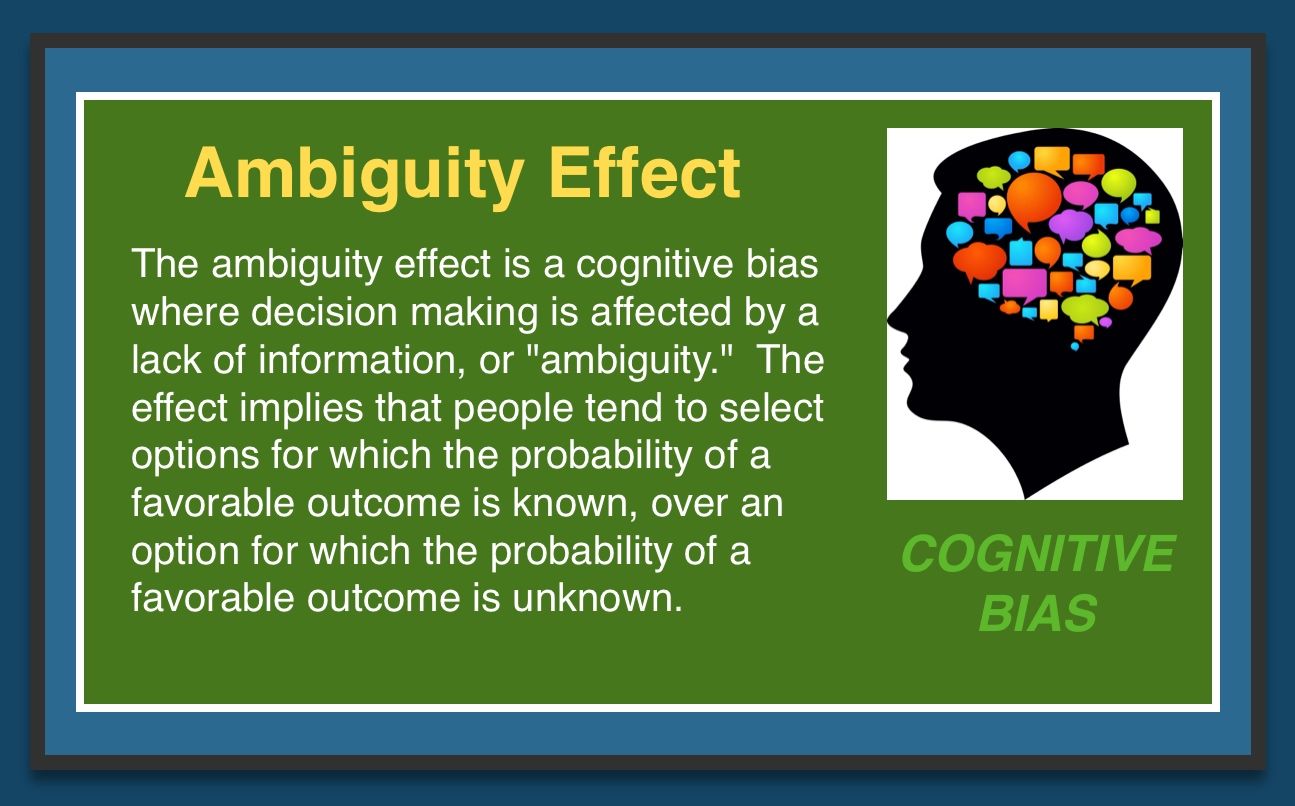The ambiguity effect is a cognitive bias that occurs when individuals prefer options with known probabilities over options with uncertain or ambiguous outcomes, even when the ambiguous options have the potential for better results. In other words, people tend to choose the safer, more predictable choice when faced with ambiguity or uncertainty.
Explanations:
The ambiguity effect is related to individuals’ aversion to uncertainty and the desire for a sense of control and predictability. People often opt for the familiar and clearly defined options to reduce the discomfort associated with uncertain outcomes.
Examples:
Investment Decisions: Investors may choose bonds or low-risk assets with known returns over stocks with potentially higher but uncertain returns.
Medical Choices: Patients might prefer a treatment with a well-established track record and known side effects over an experimental treatment with uncertain outcomes.
Career Decisions: Individuals may stick with a stable job even if it doesn’t offer as much potential for growth as a riskier but more uncertain career opportunity.
Solutions:
Risk Assessment: Weigh the potential risks and rewards of both known and ambiguous options to make more informed decisions.
Information Gathering: Seek additional information and analysis to reduce ambiguity and make a more educated choice.
Embrace Uncertainty: Recognize that some level of uncertainty is inherent in many decisions, and be open to embracing ambiguity when the potential rewards outweigh the risks.
Risk Tolerance: Assess your own risk tolerance and willingness to embrace uncertainty in different areas of life.
Addressing the ambiguity effect involves being aware of the aversion to uncertainty and consciously evaluating choices with ambiguous outcomes to make informed decisions. Embracing a degree of uncertainty can lead to opportunities for growth and innovation, but it’s important to balance this with a practical assessment of potential risks.
